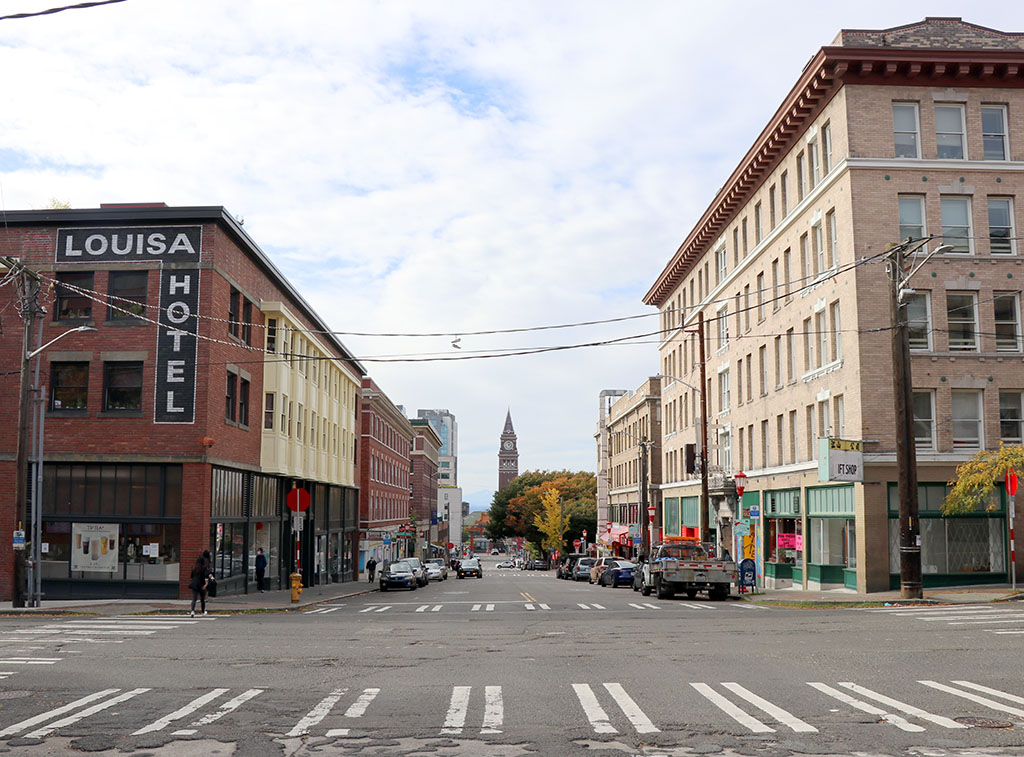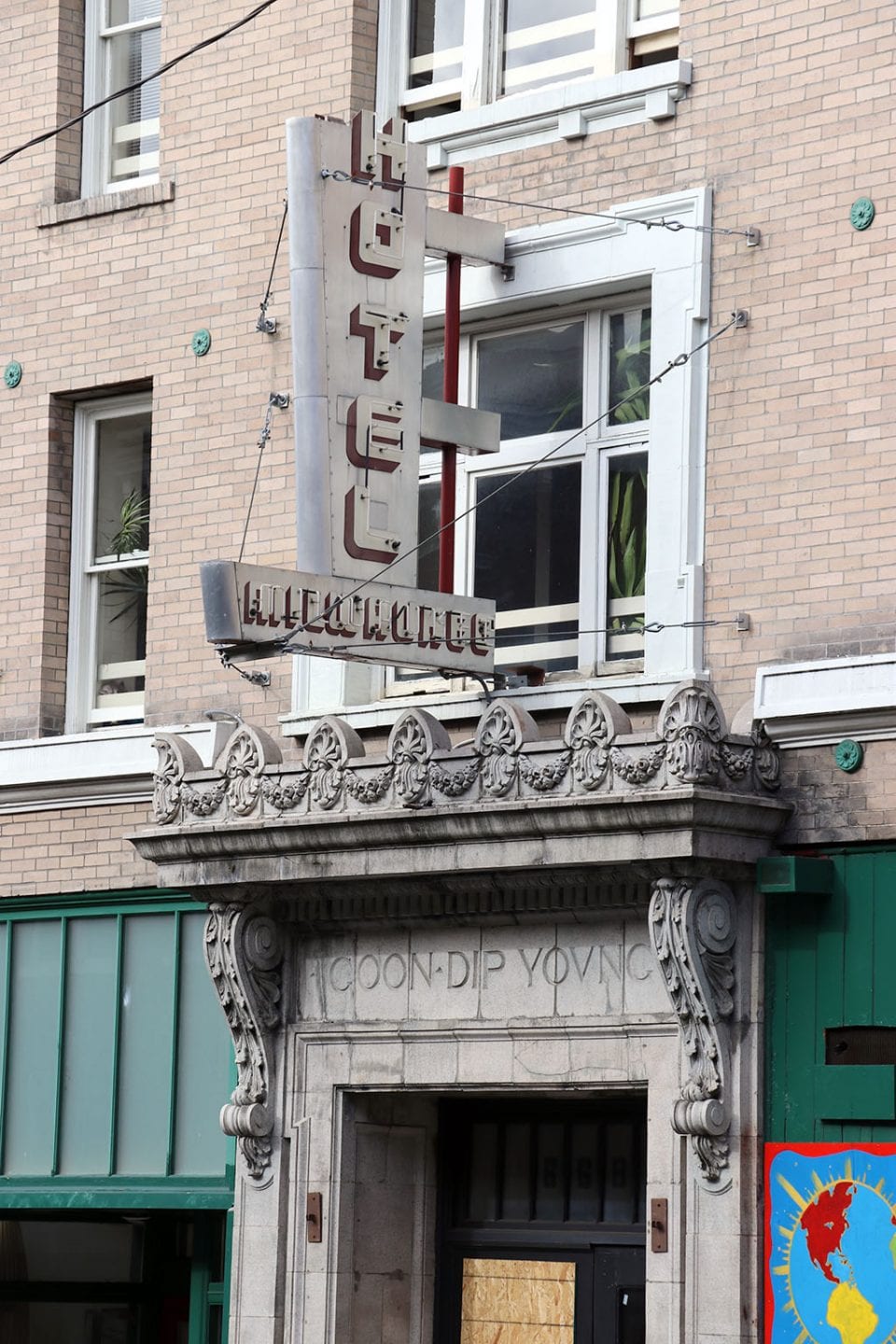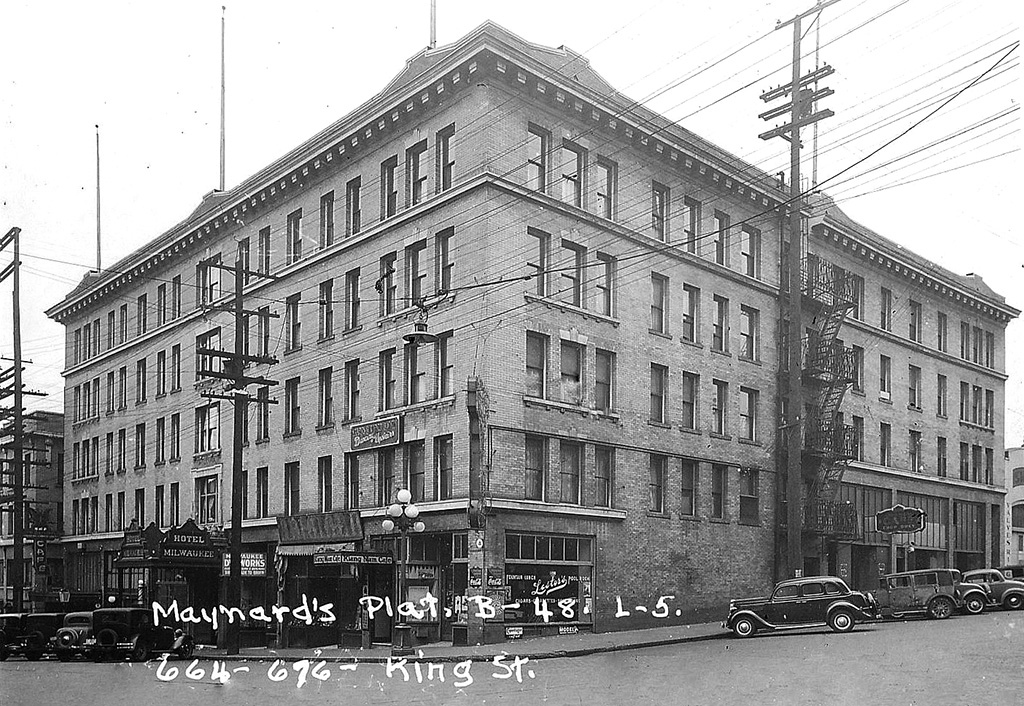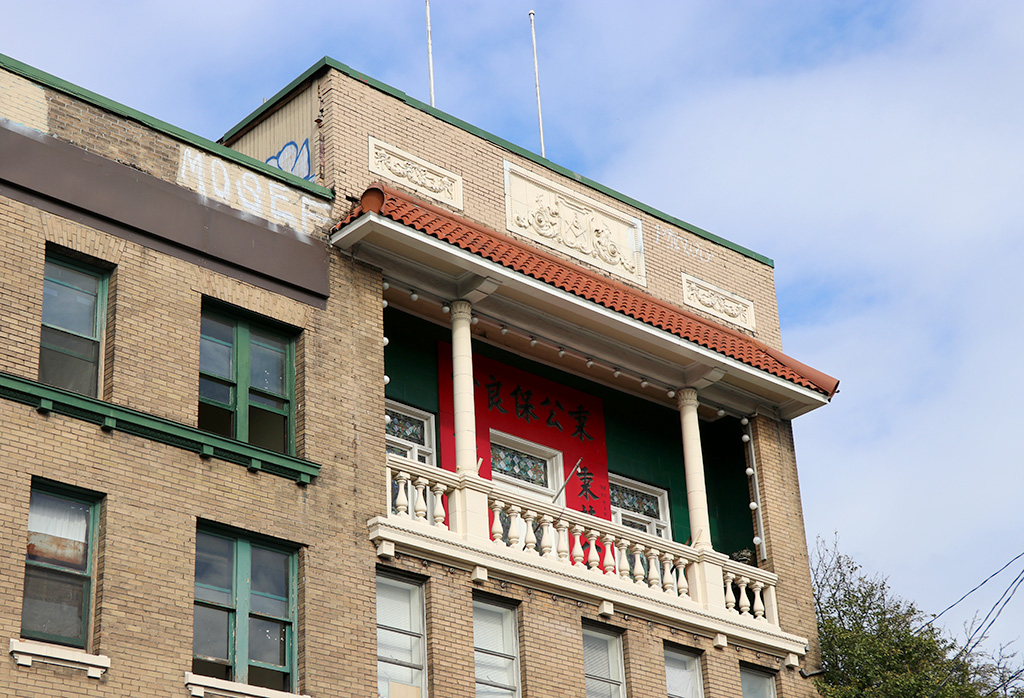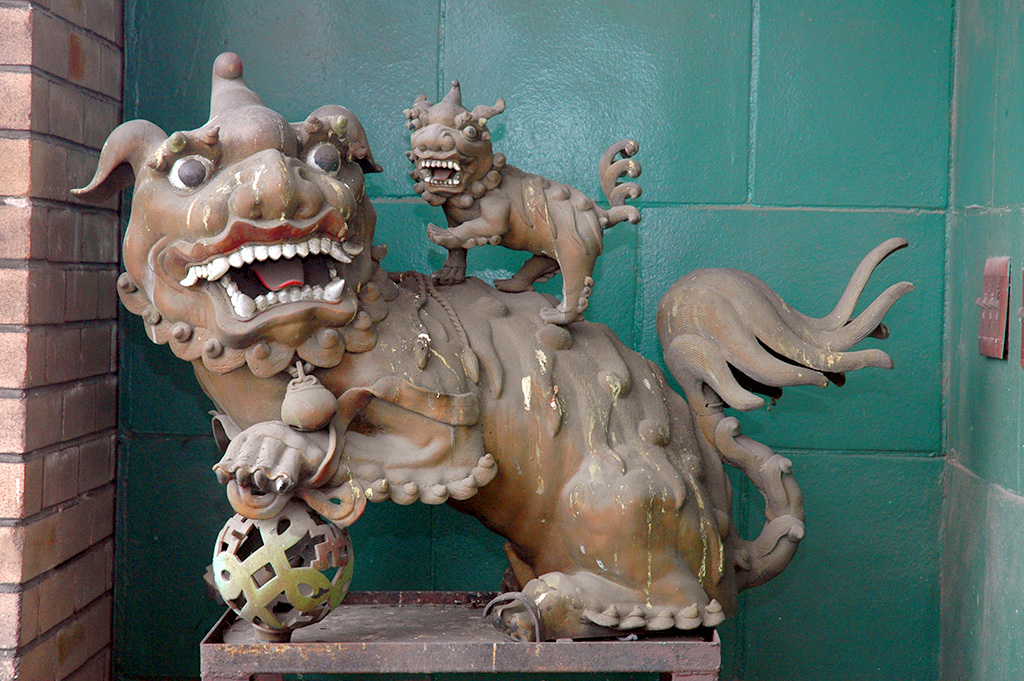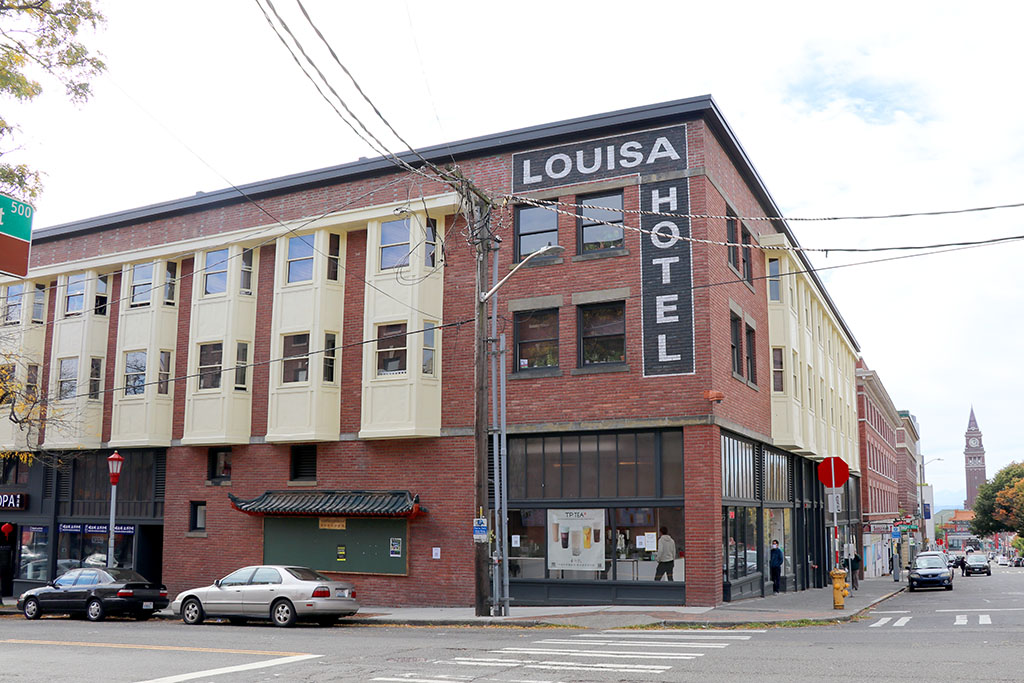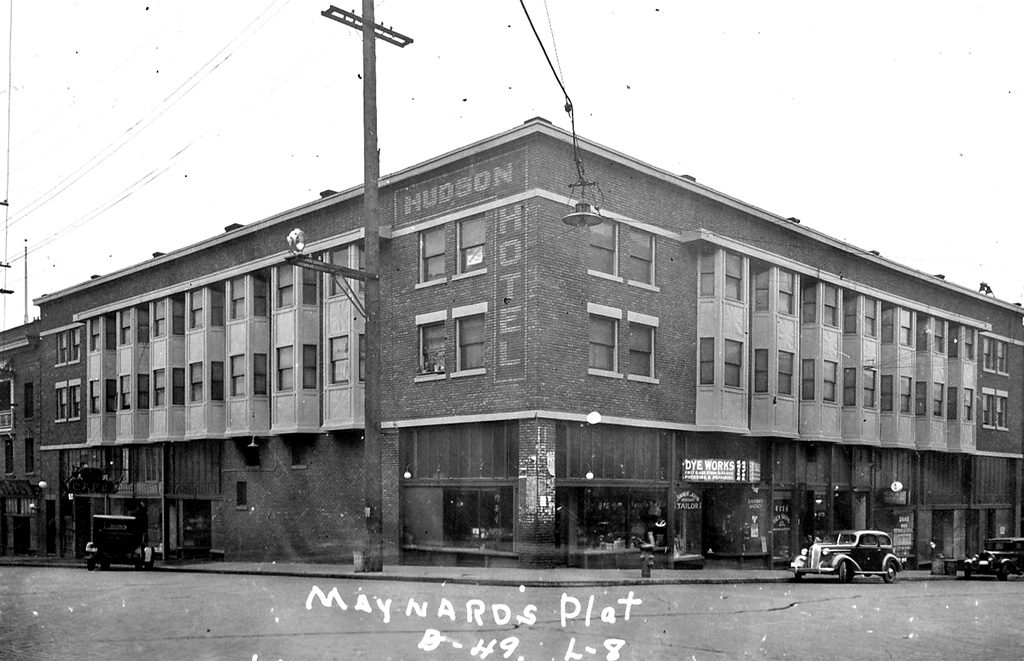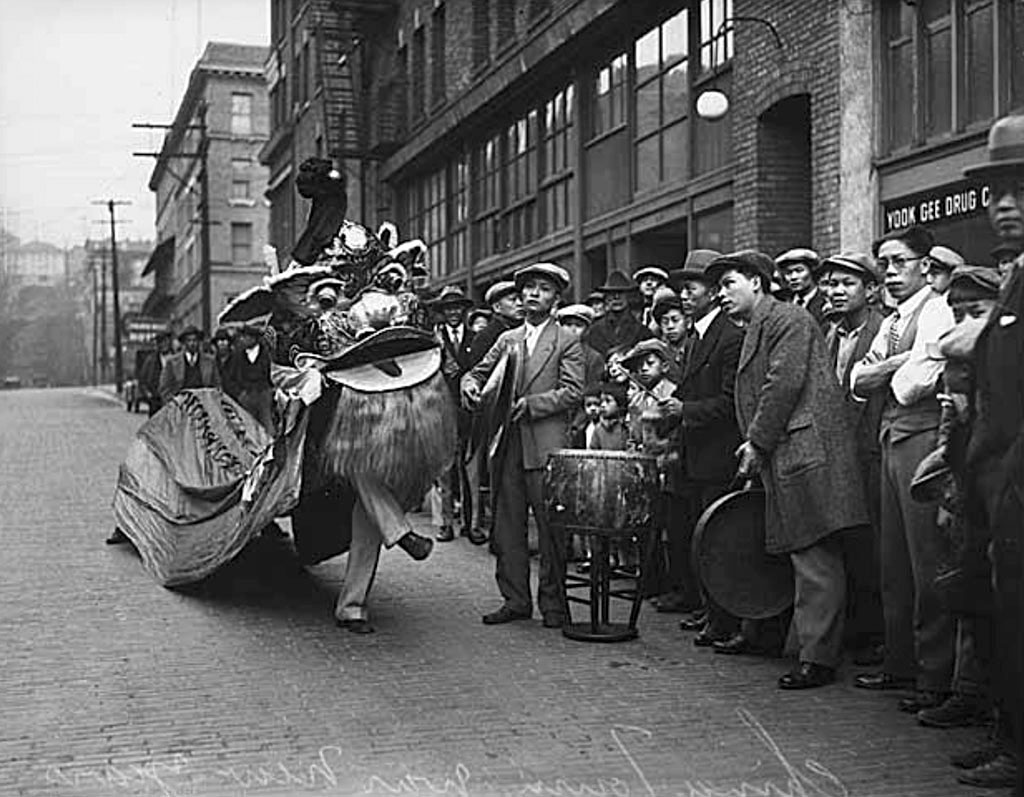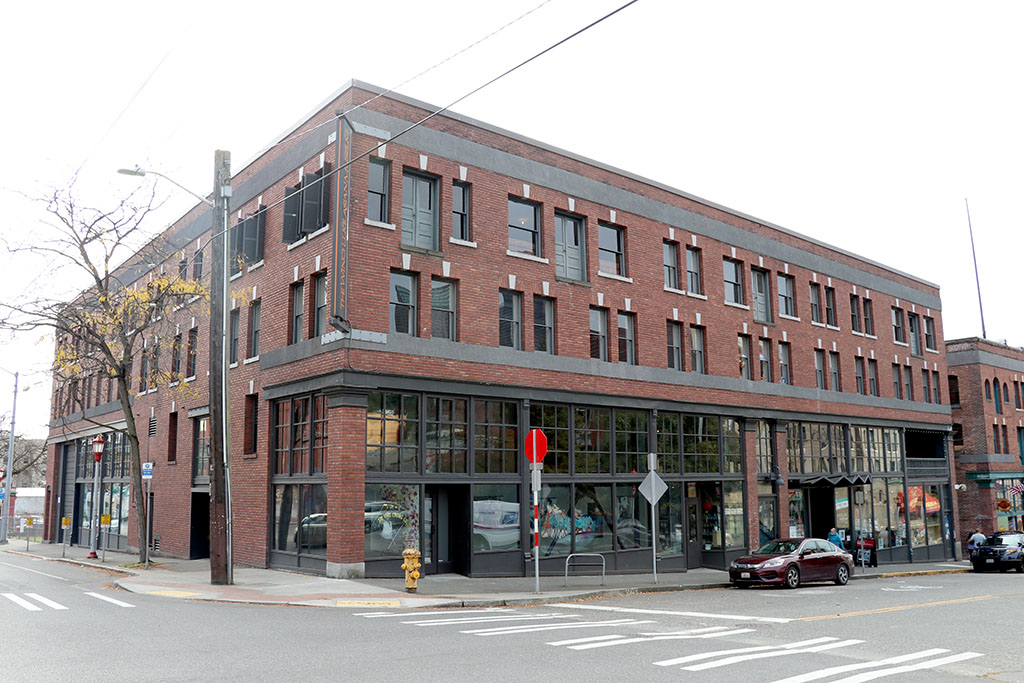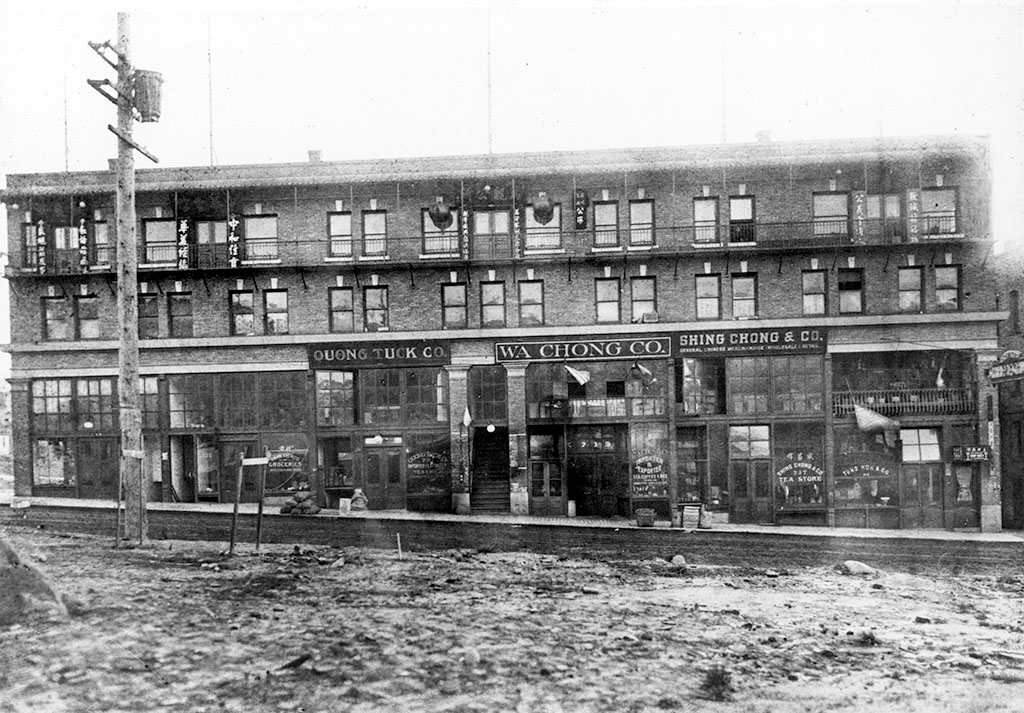King Street Landmarks
S King Street between 6th Avenue S and 8th Avenue S
-
King Street landmarks
S King Street between 6th Avenue S and 8th Avenue S
Milwaukee, New American, Louisa hotels; Bing Kung Tong and East Kong Yick buildings
Designed by Thompson and Thompson, the Milwaukee Hotel was built in 1911 for Chinese entrepreneur Goon Dip. As an immigrant from Guangdong Province, Goon had spent the early years of his time in America working and learning about labor contracting and hotel management and ownership in Portland. Goon’s early business partnerships, investments, and language skills ultimately earned him a fortune that he used for real estate development. His status as a successful businessman and his proficiency in English earned Goon the position as Honorary Chinese Consul for Washington, Idaho, and Alaska in 1909 with the Consul headquarters in Seattle. Goon’s Milwaukee building was a project that included nine commercial storefronts and served three residential purposes. It was a hotel if entered from King Street, as apartments if accessing the 7th Avenue South entrance, and served Consul Goon and his family as their personal residence. The 150-room SRO hotel made no luxurious provisions for accommodating the Goon family and like other families who lived in SROs in the district, a series of rooms could be rented. Like the Alps Hotel one block to the west, the Milwaukee Hotel was designed with an elevator and employed a staff person to operate it. The Milwaukee Café was located on the mezzanine level of the building as another of Goon’s business ventures. The building was renovated into studio, one-, and two-bedroom apartment in 2010.
New American Hotel/Bing Kung Tong Building: This Thompson and Thompson hotel was built in 1916 for the Atlas Investment Company that included the Bing Kung Association that still owns the building. The hotel included 91-single rooms and a meeting hall for the association and Chinese Masons that is visible on the fourth floor at the southeast corner of the building. Like all family, district, or tong association meeting rooms, the Bing Kung hall was in an auspicious location at the top floor of the building. The importance of the interior space is immediately visible on the exterior for its detailed decoration and recessed balcony. The balcony includes a terracotta balustrade, stained glass paneled windows, and a tiled canopy. Terracotta is also visible in the decorative inset panel above the balcony that displays the symbol of the Masons.
Louisa Hotel: Originally known as the Hudson Hotel when it opened in 1909, the Louisa Hotel is the most recently restored SRO building in the CID neighborhood. Its original 149 rooms were renovated as 84-workforce studio and 1-bedroom units. The building is the only historic hotel in the district that has two-story window bays. As early as 1916, the basement of the hotel was leased as the Sky-Hi Club, a gambling operation that decorated the stairwells and walls with paintings of elegant women patrons wearing long evening dresses and furs and men wearing top hats and tuxedos. The building also contained the Wah Mee Club, a private gambling club with its main entrance at the east side of the building fronting Maynard Alley. In 1983, the Wah Mee became the site of a robbery and the worst mass slaying in Seattle’s history with the death of thirteen patrons. On Christmas Eve 2013, the hotel sustained a fire that destroyed the eastern half of the building. The restoration of the building was completed in 2019 and rebuilt to duplicate the exterior features that were original to the building. The basement wall paintings have been retained and preserved.
West and East Kong Yick Buildings: As two additional SRO buildings designed by Thompson and Thompson Architects, the West and East Kong Yick buildings were completed in 1910. Chinese Americans believed that these two buildings were to be the flagship structures of Seattle’s Chinatown as the area was being redeveloped. Chinese entrepreneurs Goon Dip and Chun Ching Hock spearheaded the formation of a registered corporation called the Kong Yick Investment Company. “Kong Yick” translated as “for mutual benefit” intended to construct buildings that would provide a residential and commercial home for Chinese immigrants. The corporation included an officer board, and investors who would purchase shares of the company. The corporation had 1100 shares to be sold at $50/share. Known as the “twin buildings,” their facades are not identical. In addition to providing a total of 313 single rooms, each building had nine commercial storefronts, apartments that fronted Canton Alley, and an association room that was located on the fourth floor at each northeastern corner of the buildings with cast iron projecting balconies that were removed in the 1970s. The West Kong Yick building is still owned by the descendants of the original shareholders with a board of directors that represent the company. Kong Yick remains one of the oldest corporations in Washington state. The East Kong Yick building was sold to the Wing Luke Museum of the Asian Pacific American Experience in 2005 with its grand opening in 2007. The museum is named for Wing Chong Luke who served as an Assistant Attorney General for Washington state (1957-62) and on the Seattle City Council in 1962 until his death from a plane crash in 1965.
Walk east on King Street and stop when you reach 8th Avenue South to see the building on the northeast corner of the intersection.
